#apple reality pro
Text
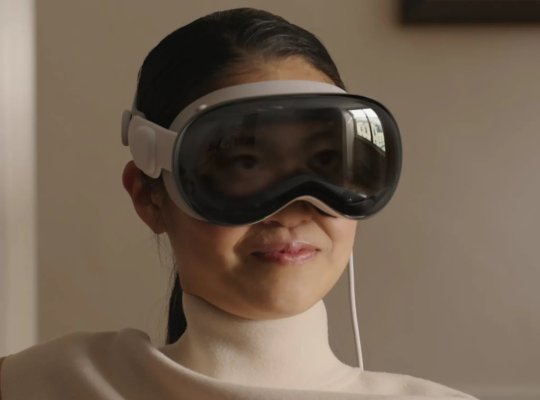

15 notes
·
View notes
Text
WWDC 2023 Highlights: iOS 17, 15-inch MacBook Air, Apple Vision Pro and more announced
“Vision Pro would potentially make for an awesome workout experience. Like, imagine doing a zombie run on that thing. Not likely for now, given the materials, etc, but would be really cool to get a sports edition” says a Twitter user.
But before the end, here is a quick recap…
Tim Cook promised a historic day and it truly was one. We saw a huge number of hardware and software announcements. On…

View On WordPress
#Apple#Apple iOS 17#apple reality pro#Apple watch#Apple WWDC#AR VR headset#iOS 17#iOS 17 leaks#iOS 17 update#iPadOS 17#iPhone 15#Macbook Air#macOS 14#mixed reality headset#new Macbook Air#Tim Cook#tvos#watchOS 10#WWDC 2023#WWDC 2023 Live#WWDC 2023 Live Updates#WWDC date#wwdc leaks#WWDC Live#WWDC Live updates#wwdc time#xros
0 notes
Text
Barcelona loses to Rayo, fails to increase league lead
Rayo’s Alvaro Garcia, 3rd left, celebrates after scoring the opening goal during a Spanish La Liga soccer match between Rayo Vallecano and Barcelona at the Vallecas stadium in Madrid, Spain, Wednesday, April 26, 2023. (AP Photo/Pablo Garcia)
MADRID — Barcelona couldn’t take advantage of Real Madrid’s setback, losing to Rayo Vallecano on Wednesday and missing a chance to increase its Spanish…

View On WordPress
#Ai News#Ai News India#Ai Tech#Ai tech and Tricks#apple reality pro#Apple Samsung#Barcelona loses#India News#Ishankohliofficial#Kedarnath news#Kedarnath temple doors open#league sports#Pm Modi#trending news
0 notes
Text
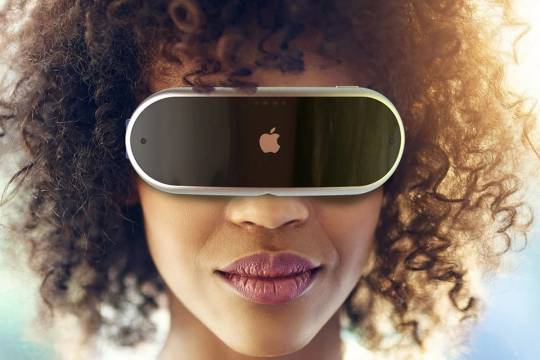
Apple’s ‘Reality Pro’ VR headset sure sounds like a monster device
Bloomberg reports Apple’s headset is set to launch this spring with controls you can use without a handheld controller, movie screens set in space, screen mirroring from your Mac, and full-body rendered 1-on-1 VR FaceTime sessions.
Source: The Verge; Apple View Concept: Antonio de Rosa

0 notes
Text
Las Apple Vision Pro también sirven para cosas útiles dentro de ese nuevo universo distópico que nos abren:
56 notes
·
View notes
Text
Through time, we’ve seen a progressive narrowing of how we experience entertainment: from the collective cinema experience, to the family viewing of the television, to the even narrower audience of the streaming service and various video apps, and now the expectation is that we’ll strap a set of screens directly onto our faces to ensure we can’t share an experience with another person. The development is a worrying one, and illustrates how disconnected tech executives are from real life.
The leaders of the tech industry are not only separated by much of the public because their wealth, experience of the world, and exclusive lifestyles, but also seem to have stunted social lives, or at least a lack of insight into the social nature of regular humans. They think an ideal way of living is one where as much as possible is mediated through digital technology because they have a specific interest in the tools that made them rich and powerful, and continuing a process that put them in that position in the first place. And while people have been open to going along with their visions, it’s pretty clear there’s a growing frustration and even dissatisfaction with the world they’ve created. Doubling down on it seems like a bad idea.
[...]
Given that the Vision Pro will retail for $3499 and won’t launch until 2024, with an initial rollout limited to the United States, I think we have a unique ability to ensure this project fails. We’ve already seen how ridicule can take the hype out of a tech bubble, most recently with crypto and the metaverse, but a decade ago the same thing happened with Google’s attempt to make its Glass smart glasses happen. Instead, its users were termed “Glassholes” and the product was scaled back and sold as a niche enterprise tool.
177 notes
·
View notes
Text

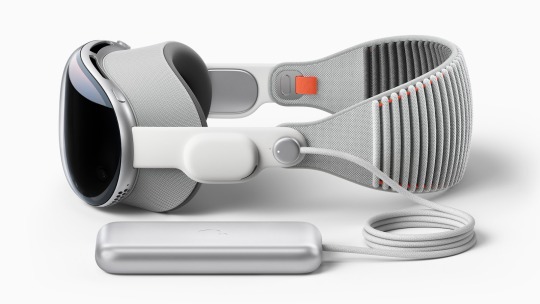
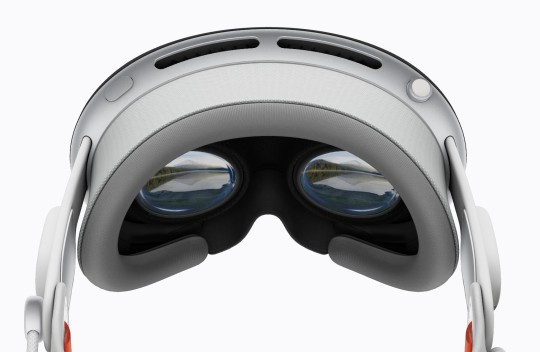


apple vision pro
#modern#industrial design#design#product design#gadget#audio#design process#tech#technology#apple#vision#pro#mixed reality
190 notes
·
View notes
Text
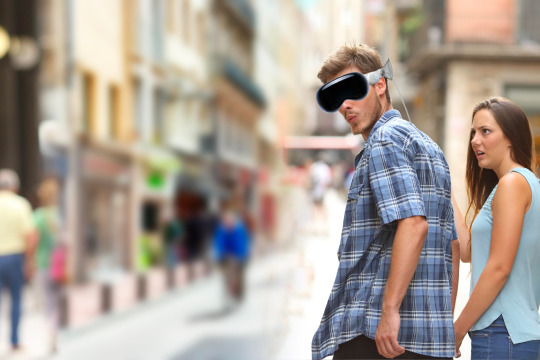
This isn't going to end well.
#Apple #VisionPro #AppleVisionPro
#apple#vision pro#apple vision pro#virtual reality#funny memes#dank memes#best memes#relatable memes#memes#meme#dank humor#dankest memes#dank memage#apple music#apple inc#ausgov#politas#auspol#tasgov#taspol#australia#fuck neoliberals#neoliberal capitalism#anthony albanese#albanese government#meme queen#meme art#meme quotes#meme worthy#meme weekend
25 notes
·
View notes
Text
10 apps that Apple Vision Pro needs right now
Let’s explore 10 future ideas for Apple Vision Pro that will inevitably be created and monetised despite all critisism and fears of the decline of the Apple Vision Pro market
AR-Couturier. The concept is based on a flexible measuring tape that extends from the fingertips of both hands (flexible finger roulette), or alternatively, you can set a starting point with a finger and measure non-linearly, thus measuring hips, chest, shoulders. Developers should consider making the polyline smoother and more accurate for measurements. Glasses would make this tool work better and more precisely than apps that often misjudge planes. This idea of a virtual measuring tape for body measurements is highly innovative and could revolutionize the fashion and custom clothing industry.
AR Fitness. Exercise in a unified AR space styled after different immersive worlds. Individuals or groups from different corners of the world can exercise together, choosing rooms based on interests, goals, and countries. There’s an option to choose trainers (for an additional fee) or exercise with prerecorded workouts (for introverts). Combining physical exercises with AR in various styled worlds is an excellent way to make fitness more exciting and accessible globally.
Virtual Confession App. This app is modeled after Russian Chatroulette, where random people communicate, but with a crucial difference: it offers an immersive space design using AR glasses. Imagine choosing a therapist’s chair, a monastery cell, or something else for your dialogue with another person. Participants not only talk but can also set tasks for each other and complete them. For an additional fee, professional psychologists/therapists can be involved, and various consultation rooms and meditation sessions can be created. This concept of random communication with elements of confession and task completion is unique and can create a highly intriguing and emotional user experience.
AR Anti Couch Potato. A humorous motivator for particularly lazy people. Put on the glasses, and a motivator (with a selectable avatar) compels you to do something (through threats or gentle manipulations). The essence of such a motivator is to synchronize with your notes/reminders and any documents, analyze your records and tasks, and make you complete them. Developers need to consider how to protect themselves from user criticism, perhaps by ensuring that each user provides documented consent in advance not to be offended by the motivator to avoid AR abuse. This idea is particularly original and addresses the current issue of motivation. Integrating AR with personalized reminders and documents to stimulate activity could genuinely help people overcome laziness and become more active.
AR Empathy Simulator. The app of the century, capable of training and teaching people empathy. What does it mean to be not like you, but to be someone else? The primary mission of this app is to deeply understand another individuality. Possibly, glasses are the only way to truly dive into another person’s mind. The principle of the app — wearing glasses, you transfer with granted permission into another person’s glasses or an accessible record of that person, to understand how they think and feel through an immersive experience. Potential downsides: criminals and various fraudsters might gain access, so it’s essential to carefully think through the policy and consider security measures twice.
AR Relationship App for Long-distance Couples. The goal is to maintain connections over distance. In the app, participants complete joint tasks, progress through levels, and earn rewards. A key feature of this game must be the ability for participants to see live 3D figures of each other. For instance, they can assemble puzzles, playfully interact, take quizzes, or explore AR stores and dressing rooms (a feature that bored spouses would appreciate). The main thing is that there can be many such applications, all depending on the interactivity embedded within.
AR Cards. Perhaps a less original idea, but it could gain a new twist through an immersive experience. Creating stylized spaces for playing cards in a combined AR session sounds cool, especially when players want to interact with players from different countries.
AR Mythology. Do you want to become a god while learning about myths? 3D mythology is a great way! Studying the 3D mythology of various cultures interactively and having the opportunity to play as one of the gods at the end of the course is designed for better learning material absorption. It’s particularly suitable for teenagers.
AR Chef. Imagine being given a list of dishes and shown how to prepare them in 3D models — boring? But add to this app the ability of glasses to point out mistakes in the cooking process, such as showing how to properly butcher meat or correctly measure the volume of a substance in a container (for which the correct container needs to be scanned and the right recipe selected so the glasses can determine the correct weight). This is hard to implement, but possible in the future.
AR Assistant for Combating Panic Attacks. Using AR to create an immersive experience aimed at aiding during panic attacks, combined with using smartwatches to monitor physiological parameters, represents an innovative approach to treating psychological conditions. This application should work alongside devices like the Apple Watch to track vital parameters and include a set of rules/techniques from licensed psychotherapists for specific panic attacks, as well as a calendar to monitor such states and further prognosis.
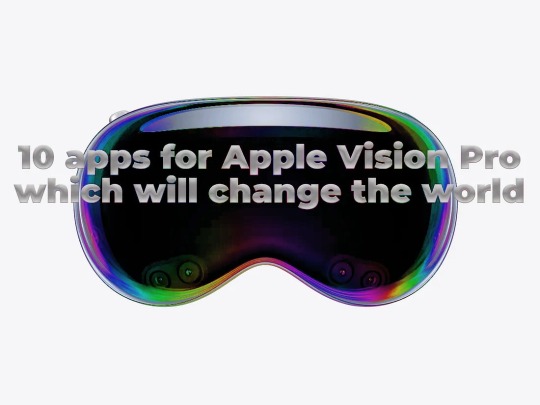
#technology#tech#technews#apple vision pro#augmented reality#apps#games#dating#dating games#empathy#culture#fashion#cuisine#ideas#immersiveexperience
12 notes
·
View notes
Text
VR works in video gaming because games are all about creating experiences. VR has many practical and technical limitations, but when a game is designed to take advantage of its strengths, it excels, albeit only to the smaller audience of VR enjoyers.
So I truly think VR or mixed reality as a productivity tool, is just bad. VR does not provide faster, more intuitive workflows; it forces you to engage in its weird and unnatural control schemes and spaces. VR is only good at novelty experiences, everything else is just faster, easier, cheaper through other methods.
55 notes
·
View notes
Text
I always want Virtual Reality to be better than it is.
VR has been around for approaching a decade at this point, and companies keep trying to make it happen. I have seen the theory that Facebook (Meta) got into the VR game because they want hardware they can control without third parties stopping their data collection, but they appear to be downplaying it now.
So can VR be good? When is it going to happen?
My first headset was the HTC Vive, and it was fun at the time, but playing it today, it's pretty dire. Depressingly low resolution, major screen door effect, big, and bulky. Annoying external trackers. It is like 10% of the way to being what I want VR to be. I still have it but can't really play it since the poor quality usually leads to a one way trip to the floor.
I have tried the Oculus Quest 2, and it is kind of on its way. It has better controllers, some actual passthrough, and the screen door effect is much less pronounced. Too bad Facebook are evil. It's like 40% of the way to what I would consider a good headset to be.
I am looking at the Apple Vision Pro, and it's kind of getting there, it is like 70% of the way to being what I want VR to be. It has crystal clear video with no screen door, passthrough that actually works for professional use, and the hand and eye tracking appears to actually work which is impressive. It isn't for gaming and has absolutely no software support for the VR software people like. It appears to occupy a different niche to the cheaper gaming headsets, aimed at "Professional" use. It shares this trait with the quest pro.
We have come a long way in the last 10 years, but it will probably be another 10 years before virtual reality is something people actually want to use. Tech companies are never ones to give up though, and they will keep painfully iterating until they get there. I think to have a chance, to be the 100% of what I want it to be VR, I think it would need, including but not limited to;
Tethered and untethered use, allowing for local apps or connecting to a PC for extra horsepower. No bullshit lockdowns on software like they have today.
Functional hand tracking AND quality VR controllers for different applications. Both of these exist today but not in the same product at the same time for some reason.
Lightweight and cool. Fanless. Won't give you a spinal injury if you wear it for more than 3 hours. Semiconductor technology is probably about there or will be there soon, but Apple isn't fanless. Sadly Apple's battery in the pocket trick might be the only way to keep the weight down. Batteries just don't really change much, sorry!
Ultra high resolution. No screen door effect. Apple are about here but it's crazy expensive, so in 10 years I am sure the price will go down. VR isn't going to happen unless you can get Vision Pro quality at the baseline, for the price of a Meta Quest.
This really reminded me of when I wanted to get a tablet PC in like 2007 but quality tablets didn't exist yet. It was all massive chonky Windows CE garbage. I knew it was coming, everyone did, but tech wasn't there. The ipad releasing several years later is what really put them in the hands of consumers.
Mass software libraries for VR won't happen until these technical challenges are overcome, and by then, who is going to care? Maybe the vision pro is Apple taking something that already exists and putting it to the mass market, as they have done so many times before, but maybe this time it isn't going to take. Maybe VR is just never going to happen, but if it does, I want to be here for it. Play Half Life Alyx if you can, and never buy a Meta product if you can avoid it.
16 notes
·
View notes
Text

I have so many nerdy thoughts about the Apple headset, particularly when it comes to interfaces and media, so read at your own risk:
I really think that Apple is a design company first, a technology company second. The fact it can do both well is impressive, but let’s be real: most of what was shown with the Reality Pro is stuff that other companies have done, piecemeal and less effectively, for the last 15+ years. Still, I bet even their competitors are relieved, and even excited, to have Apple in the VR headset market (and yes, it is a VR headset). Relieved because Apple didn’t show any new tech paradigm that puts them at a massive disadvantage; and excited because if someone is going to convince “normies” to put on a headset, it is going to be Apple. It may be through the Vision Pro that people get convinced of the value (such as it is) of spatial/volumetric/immersive interfaces, simply to go purchase a HTC Vive for a 3rd of the price. One can tell that Apple spent a lot of time and money showing what it would take to deliver some of the promises that VR manufacturers have been making for 15 years. Some users will happily take those promises as fulfilled with the Vision Pro, while others will agree to compromises and get other headsets.
But the real question is that of the value of spatial interfaces (what they really mean when they say “Spatial Computing”). It is not something we can answer in the abstract, as it involves a sort of media literacy accrued throughout generations, and spicy debates regarding immersive media. The generational issue is centered on a gamble these companies are making: That people who are naturalized to virtual worlds will demand novel user interfaces, expecting a 3rd dimension to simply “be there”. Why can’t I rotate my spreadsheet in Excel, revealing the transversal data space between the row and column? Can we put the formula in these new Z-Rows, instead of having to double-click on a single cell, like a caveman? What patterns will I discover once I can have graphs done based on rows, columns and Z-Rows, floating like holograms I can walk through? If these ideas sound bizarre to you, it may be because you have not been playing 3D games since childhood. Companies hope that new generations of users will ask these sorts of questions, however, as they need these spatial interfaces to become popular for their growth.
But even more foundational here is the issue of immersion. The concept of manipulation through media is as old as Plato, but it remains fresh and pressing in the face of social media and AI deep fakes. Most prescriptions on how to avoid manipulation put responsibility on individuals, who are supposed to “see through'' the BS (audience), or resist the monetary or libidinal temptations to create anti-social behavior (cultural producers). This is a deeply moralistic view, as it completely misses the role that the affordances of any given medium play in being a person. The fact is all and each subject is, at moments, manipulated and manipulator. Which of those roles we play is determined as much by individual “fixed” world views (morals), as by the relational space drawn by our communication technology (including language itself). This is why perfectly kind people can turn aggressive online, or why well-adjusted individuals consume objectionable content every day. The reptilian brain is always there, ready to be pleased or forgiven, and will slip into any medium it can regardless of how much puritanical restraint the medium is designed with.
To further complicate things, it is really hard to find the perfect split between audience and cultural producers as separate entities. No only because of the “prosumer” concept (which I find uninteresting), but because it is clear that even the most cool and collected cultural producer is, in themselves, a medium through which the program of immersive technology realizes “itself”. In other words: Apple is the way in which immersive media happens, turning the company into just an effective operator of an entity with its own agency and goals. What does “immersive media” want? That is the imminently political question for all of us in design, as we continue to carry its will. I am thinking about this myself, obviously, but trying to assert agency over it is REALLY HARD (specially as individuals).
Last thing: I find it fitting that Apple may be the one to finally push a bunch of people into immersive media, since it is the company that most effectively de-fanged minimalism as a political strategy. To me, Apple Minimalism “looks like” Brechtian alienation without the political radicalism, and the dematerialization of art without the materialist critique. We finally saw what all of those clean and smooth surfaces were for! It is not so that you reflect on your lived experience as a subject under capitalism or the police state. They are there so that you can watch the sexy cat-people in Avatar: The Way of Water, without anything (or anyone) bothering you.
36 notes
·
View notes
Text
Okay, I've been seeing a lot of questions about the Apple Vision Pro this week so I thought I'd do a quick Q&A. Hope this helps
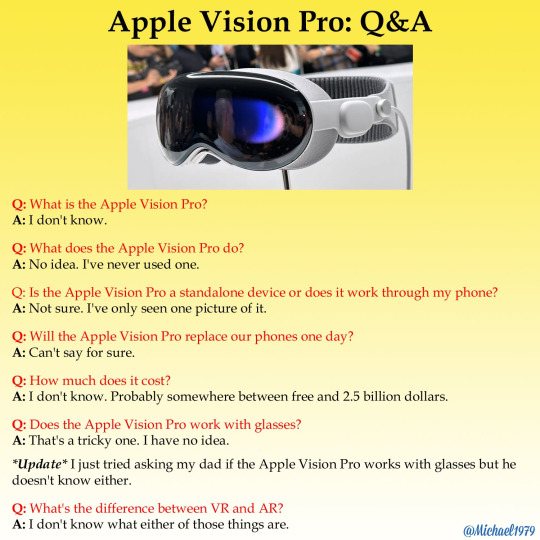
32 notes
·
View notes
Photo

11 notes
·
View notes

